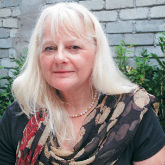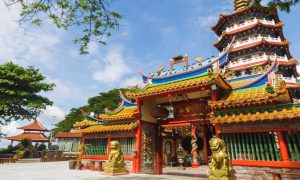It’s easy to forget when you live in Penang that it is actually an island. Though a friend of mine, a long time Penang dweller, talks mischievously of “going overseas” when she goes to the mainland – well, I suppose, it is across the water. But it’s got such excellent links to the mainland that many of the inconveniences of island living simply aren’t there. The trusty ferry service between Weld Quay and Butterworth, the oldest in Malaysia, will come up for its centenary year in 2020 and it’s still going strong. One of the benefits of taking the ferry is that you can walk into the train station at the other end and travel to Bangkok one way or Johor Bahru the other. Quite a lot of work is going into upgrading the track which could potentially open the way to daily commuting between Penang and KL in the not-too-distant future.
After some delays, the opening of the second Penang Bridge last month will hopefully relieve a lot of the traffic on the existing bridge which should make travel at peak times much more pleasant. As it is situated on the southern end of the island, its presence has already had an effect on building in that area which will only accelerate when the bridge is open. In the past, that corner of Penang was rather sleepy and undeveloped, but now huge concrete developments are taking shape – if indeed modern run-of-the-mill architecture could be considered shapely in any real sense.
It seems that everyone wants to live in Penang – actually I should re-phrase that and say that everyone wants to own a living space in Penang, which is not at all the same thing. A large percentage of the more expensive property sold in Penang goes to overseas buyers, some of whom may never sleep a night in their property, let alone live in it in any meaningful sense. Though the buyers come from all over the world, many of them are from neighbouring Asian countries. For them, Penang property still seems cheap and so is an excellent investment which can simply be disposed of in a few years and its profi t realised. But if it’s just a question of money why not buy more land over the water in Seberang Perai where it’s a quarter of the price?
Part of the answer perhaps lies in the fact that Penang is an island and is still, some respects, perhaps very loosely defined, still a kampung. This is one of those Bahasa words that defies exact translation. Village certainly, hamlet possibly, but I think the word suggests more of a feel of community, of a rich network of links between human beings. It’s one of the reasons that I find Penang attractive and I doubt that I’m alone in this. Despite the diversity and the multiculturalism, there’s still some remnant of a shared sense of what it is to be a Penangite, the inhabitant of an island with a history which if not exactly shared, has at least the possibility of common ground.
And there are actual kampungs left in Penang, which is more than can be said for Singapore, for example. In my own neighbourhood of Tanjong Bunga, there are several kampungs which still manage to resist the pull towards high rise modernisation. In these little enclaves one can wander, under the filtered light of spreading trees and forget the frenetic pace of twenty first century life. In one kampung, there are at least three temples, one of them in the shape of the prow of a boat facing the sea coast. Most appropriately, it is a temple devoted to worship of the sea goddess. Though the houses are mostly constructed of tin and brick, not wood, and not at all beautiful, they are at least harmonious with the landscape. There’s often a swing on the front porch which suggests the possibility of neighbours passing by and dropping in for a chat.
The kampung in neighbouring Tanjong Tokong (literally Headland of the Gods) contains a temple that dates back to 1799 and so must be considered one of the oldest on Penang. It’s the setting for the famous Chneah Hoay ceremony that will take place in February. In its peaceful gardens there are three graves to “the ancestors” – people who came to the island before Francis Light. It’s a kampung where fishermen lounge at noon, mending their nets or passing the time with their friends in the local coffee shops. There are quite a number of boats but there is talk these days of the catches being much less than they were previously and of people stealing from nets that are left out overnight – something that would have been unheard of in the past. One wonders how much longer this way of life will continue.
So Penang is poised on the cusp of change, a heritage city and an island where nature can still be seen, with pockets of traditional kampung life, yet deeply attractive to overseas investors. There’s always the risk that the developments that are so rapidly being constructed here will destroy the very charm they aim to make money from. We may need to be wiser guardians of the limited land space of a small island to ensure Penang’s future well-being.
Homepage highlight photo credit: Michael Camilleri, Flickr
Source: Penang International February/March 2014
Read more:
- The Ghost of Christmas Past for An Expat in Penang
- The Difficulties and Issues Faced in Trusting Someone New
- Malaysia’s Standard of Service in Restaurants: Good or Bad?
What are your thoughts on this article? Let us know by commenting below.No registration needed.

















A very restrained picture of Penang and a contrast, perhaps to the one I submitted some time back. which was not deemed worthy of publication